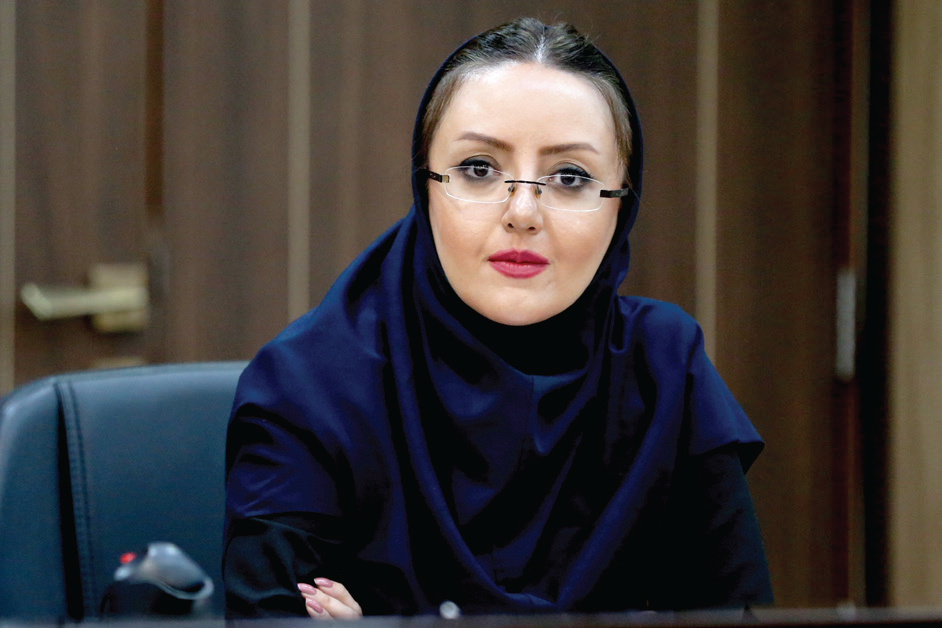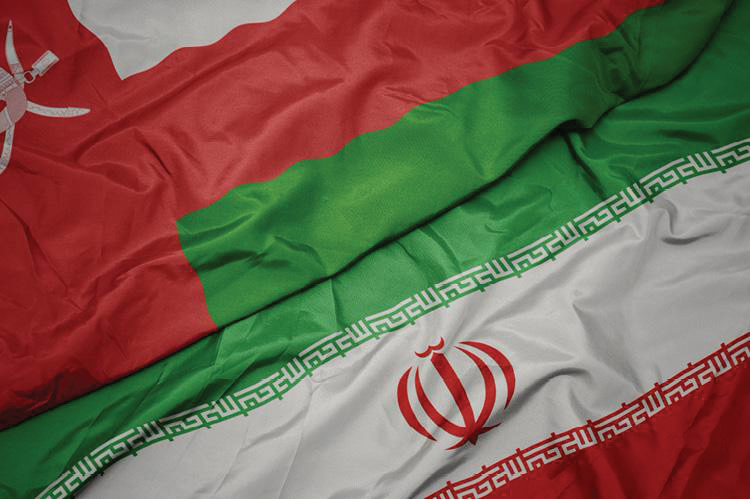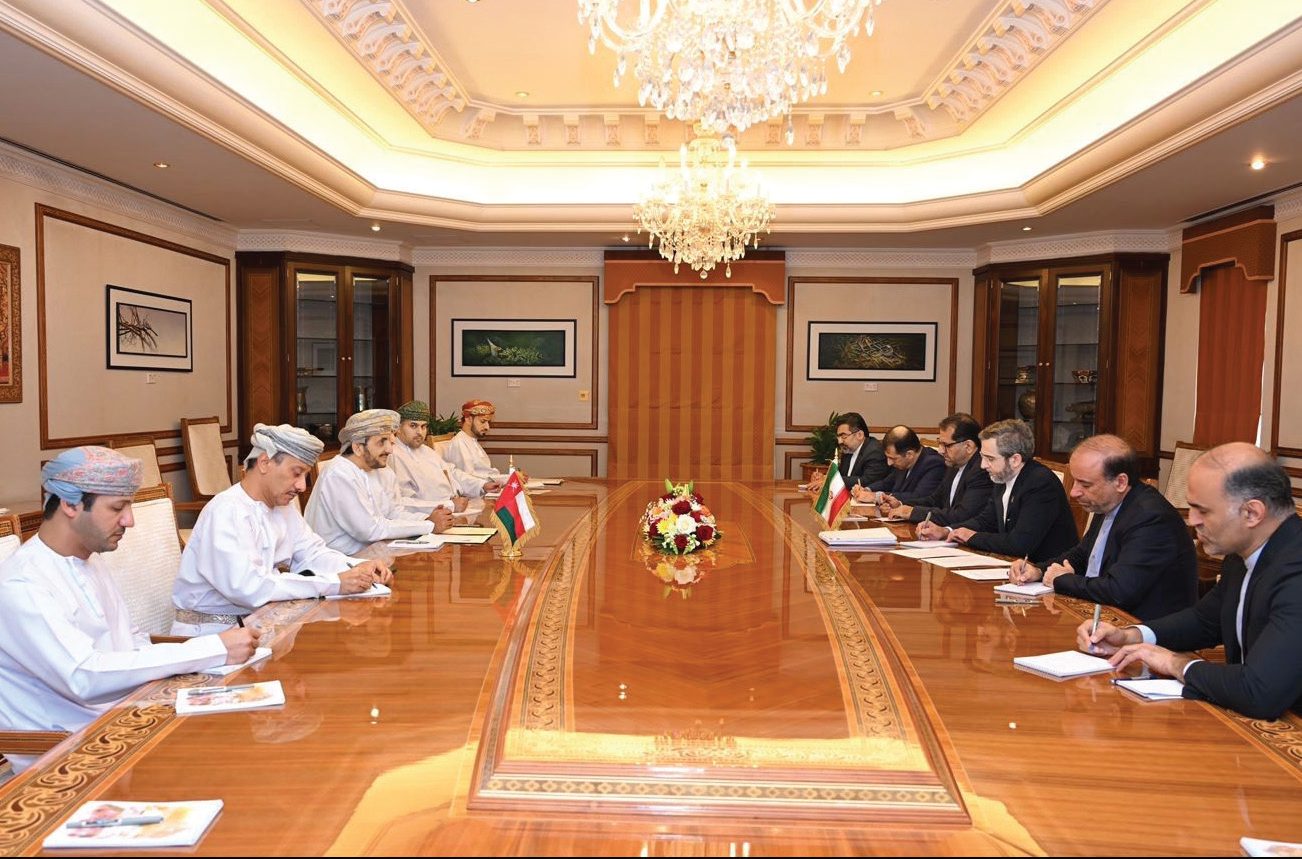By : Reza Taeb
 Arezoo Jamali Nazari, the Director of the Provinces of Iran’s Chamber of Commerce and the Secretary General of the Iran-Oman Chamber of Commerce. She has been working as the Secretary of the Joint Chamber for 6 years. She has a Ph.D. in Business Management from Shahid Beheshti University and extensive executive experience in investment, fi nance, and international banking, as evidenced by her previous role as the International Vice President of the Capital Bank. She is also a lecturer in Strategic Management and Behavioural Management at Shahid Beheshti University and Islamic Azad University.
Arezoo Jamali Nazari, the Director of the Provinces of Iran’s Chamber of Commerce and the Secretary General of the Iran-Oman Chamber of Commerce. She has been working as the Secretary of the Joint Chamber for 6 years. She has a Ph.D. in Business Management from Shahid Beheshti University and extensive executive experience in investment, fi nance, and international banking, as evidenced by her previous role as the International Vice President of the Capital Bank. She is also a lecturer in Strategic Management and Behavioural Management at Shahid Beheshti University and Islamic Azad University.
To begin, could you please provide an overview of the activities of the chambers of commerce, with a specifi c focus on the Chamber of Commerce of Iran and Oman? (The establishment date, approach and mission, the role of the chamber in establishing business relations with Oman, etc.)
The Iran-Oman Joint Chamber of Commerce was established in 2005 to regulate economic and commercial relations between the private sectors of Iran and Oman. The Chamber is an offi cial institution that facilitates trades, boosts economic exchanges, encourages joint investments, and enhances access to secondary markets and re-exports through Oman. It also promotes Iran’s economic potential and competitive advantages.
In 2014, the Chamber was upgraded to the Joint Chamber with the approval of relevant supervisory councils. As an independent legal entity, the Joint Chamber collaborates with the Iranian Chamber of Commerce to develop strategies for business relations and increase mutual investments between the private sectors of both countries.
How many Iranian and Omani companies are currently registered in the Iran and Oman Chamber of Commerce? (Please explain their fi elds of activity, potentials and capabilities, etc.)
The Iran-Oman Joint Chamber of Commerce is a legally recognized and autonomous organization with over 350 active members from reputable and large companies. The Chamber has a governing committee that is elected by the members. All business interactions between the private sectors of Iran and Oman are conducted through the Joint Chamber. Arezoo Jamali Nazari Companies registered in the Iran-Oman Joint Chamber include large and medium-sized manufacturing and industrial companies in a variety of sectors, such as food processing, tile production, ceramics, plumbing components, electrical appliances, cement production, other construction materials, oil and gas refi ning, petrochemicals, steel manufacturing, mining operations, international transportation services and foreign trade activities.
What is your assessment of the current economic, diplomatic, and cultural relations between Iran and Oman? How do you see the two countries in terms of their overall relationship?
Iran and Oman have been having a long-standing political relationship, with the government of Oman maintaining a consistent approach towards Iran throughout history, regardless of regime change or government type. However, despite the strong political ties, the level of economic relations between the two countries has not always been as strong. In 2012, when the Iran-Oman Joint Chamber of Commerce was formed, the trade volume between the two countries was only $221 million. Company registration was diffi cult, there were no direct air or sea links, and the necessary infrastructure for commercial relations was lacking.
But with the formation of the joint chamber of Iran and Oman, identifi cation of obstacles and follow-up for the demands of the private sector were put on the agenda so that last year, the volume of trade between the two countries reached the highest level in the history of trade relations between Iran and Oman.
In the past year, according to the established infrastructure, with the support of the two governments and the trade development organization for the private sector, the sincere efforts and cooperation of the Oman Chamber of Commerce and the Iran-Oman Joint Chamber of Commerce as the custodians of the private sector of the two countries, the volume of commercial exchanges between Iran and Oman increased from 221 million dollars in 2013 to 1.8 billion dollars in 2022 and the volume of Iran’s exports to Oman went from 146 million dollars in 2013 to 1.1 billion dollars in 2022. The volume of Iran’s imports from Oman increased from 75 million dollars in 2013 to 800 million dollars in 2022. The annual volume of trade between the two countries reached an unprecedented record with a growth of 41% in 2022 compared to 2021. In the fi rst quarter of this year, the value of Iran’s exports to Oman was 270 million dollars, while the value of imports was 1.7 billion dollars, which has faced favorable growth compared to last year.
Also, due to Oman’s free trade agreement with 16 Arab- African countries, America, Singapore and the incentives provided by Oman’s free zones for foreign investors, today we can see that Oman has become a base for the re-export of Iranian goods by creating only 30% of the fi nal added value of the goods in Oman and obtaining Oman’s origin certifi cate.
Please explain the volume of trade between Iran and Oman, as well as its overall trend in recent years. Additionally, please explain what goods and services are being exchanged.
The following goods are likely to be exported to Oman: food, agricultural products, building materials, cement and clinker, metal ores, electrical and electronic equipment, medical devices and disposable hospital supplies, cleaning products and cellulose products. Efforts have been made to attract medical tourists from Oman. There is also potential for the export of technical and engineering services in the form of build-own-operate (BOO) and build-operate-transfer (BOT) projects, particularly in the mining, construction, and solar energy sectors in Oman.
Do sanctions pose any challenges to business exchanges between the economic and commercial players of Iran and Oman? Additionally, what is your opinion on the lack of information and data about these countries? Finally, what role does the Chamber of Commerce play in addressing these challenges?
The main challenges in trade relations between the two countries are:
1. Lack of banking relations between the two countries
2. Iranian contractors are unable to participate in Oman tenders because they are banned from the international banking system. This means that they cannot obtain bank guarantees, which are essential for bidding on government contracts.
3. The high costs of direct sea transportation between the two countries due to the lack of government subsidies
What events have been prepared by the joint Chamber of Commerce of Iran and Oman? Please indicate their topics and venues.
The joint chamber, as the trustee of Iran’s private sector in Oman and a member-oriented institution, in line with the responsibilities set by the legislator, has provided facilities for economic activists, some of these services include: – Access to business/tax/labor laws and regulations in Oman, laws and regulations governing Oman’s free zones, how to register a company in Oman, laws governing foreign investment in Oman and other laws related to business and investment in Oman -Helping to facilitate the registration of commercial companies or the construction of production and investment units in Oman – Providing a directory of Oman commercial companies in the fi eld of various activities – Playing an effective role in resolving commercial disputes with the cooperation of Iran Chamber of Commerce Arbitration Centre – Providing facilities for export units to have an export insurance policy, as well as fi nancial validation of Omani partners. – Providing information on all specialized exhibitions in Oman, with domestic and Omani presenters, and enjoying special discounts for members of the chamber to rent booths in specialized exhibitions in Oman. – Sending and accepting business delegations and holding business meetings (B2B) between the economic players of the private sector of the two countries – Holding specialized seminars and workshops related to trade with Oman – Providing specialized advice in the fi elds of business/ transportation/investment and setting up business contracts
Could you please explain the steps involved in becoming a member of the Iran-Oman Chamber of Commerce? What services do members receive?
All economic practitioners in the nation have the opportunity to join the Iran-Oman joint chamber. By fi lling out the membership applications and presenting valid identifi cation papers, they can effortlessly acquire membership and access all the facilities offered by the joint chamber.
The cooperation between Iran and Oman outlines
many areas. Can you share some examples of the
most important ones?
As you know, Oman has received a lot of media attention in recent years, which has led to some people taking advantage of some businessmen’s profi ts. Oman is a country with high costs, so it is important for all businesses entering the Omani market to have a well-defi ned business plan and seek the necessary guidance.
What are the factors that attract investors to Oman? Is Oman’s commercial-administrative bureaucracy seen as engaging by investors?
Oman has free trade agreements with 16 Arab-African countries, the United States, and Singapore. Additionally, the ability to register a company in Oman with 100% foreign ownership, convenient access to open waters, a unique political relationship, Oman’s development program, and the government’s support for foreign investors are important factors.





